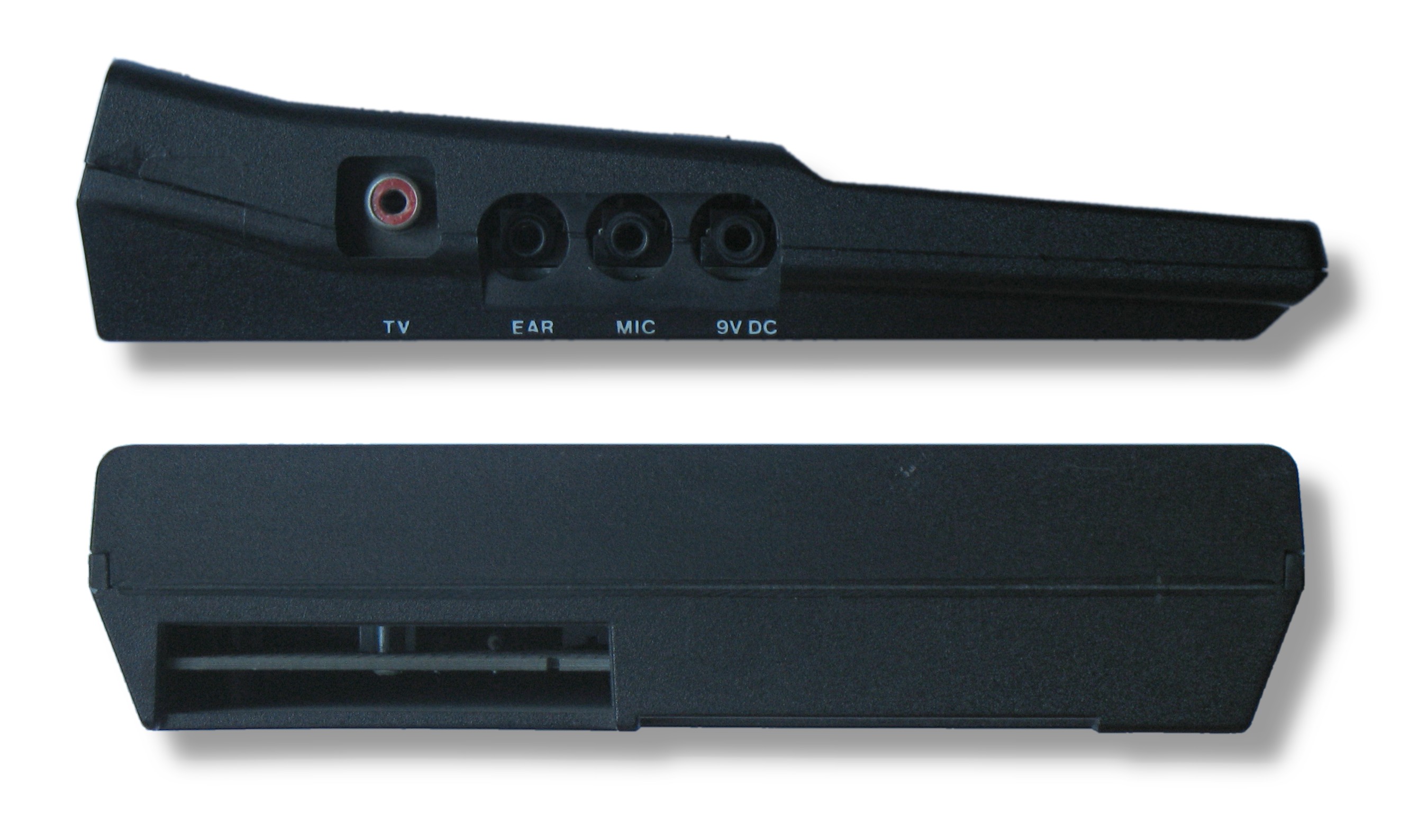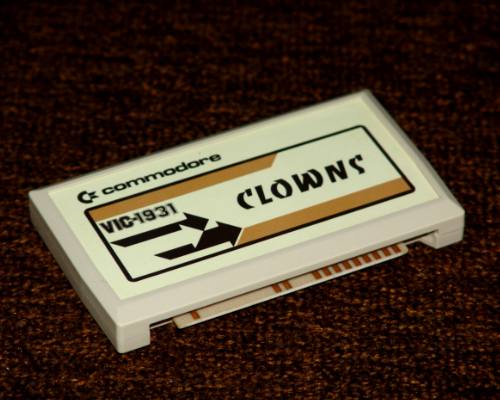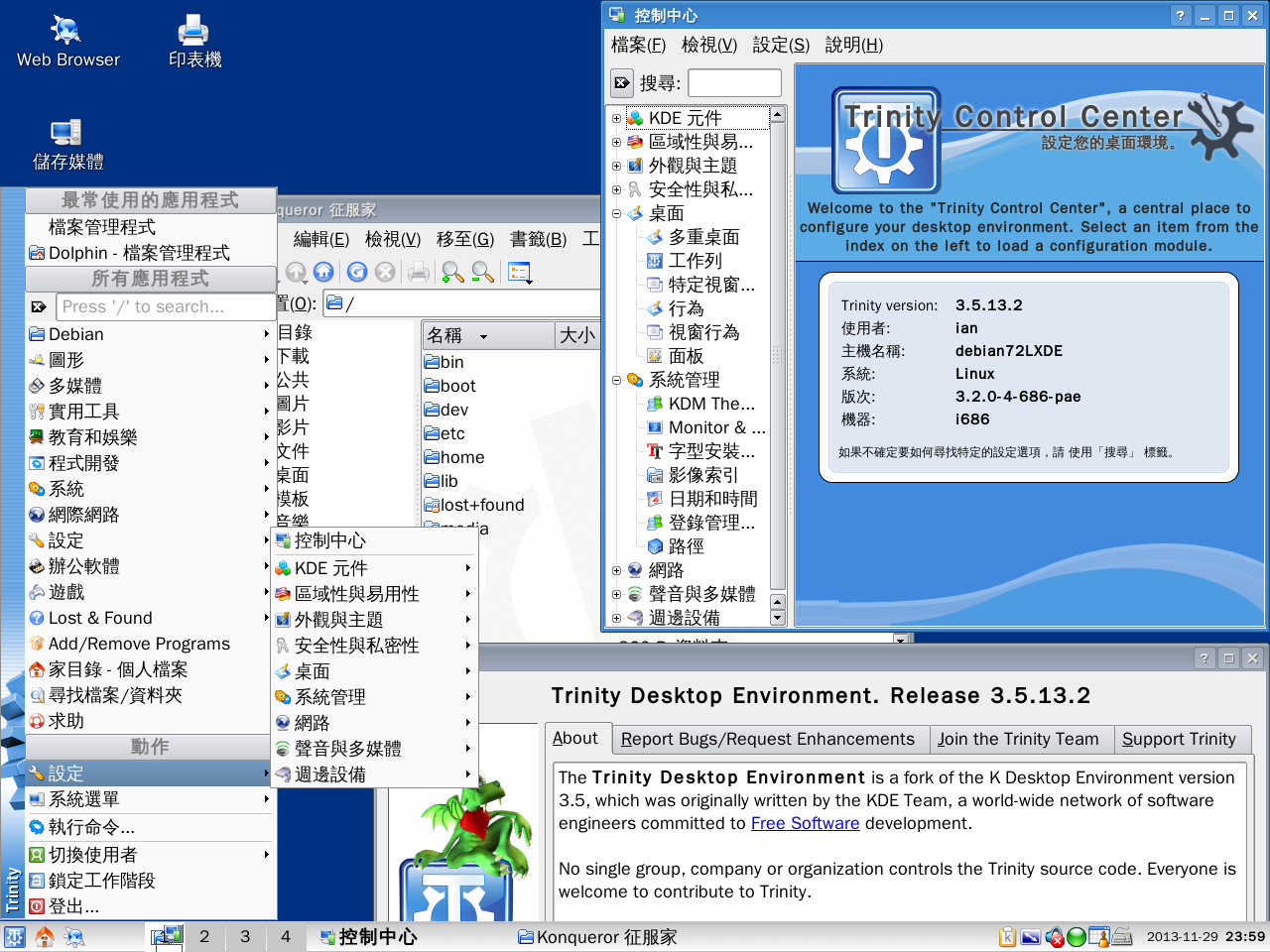|
TS1000
The Timex Sinclair 1000 (or T/S 1000) was the first computer produced by Timex Sinclair, a joint venture between Timex Corporation and Sinclair Research. It was launched in July 1982, with a US sales price of US$99.95, making it the cheapest home computer at the time; it was advertised as "the first computer under $100". The computer was aimed at regular home users. As purchased, the T/S 1000 was fully assembled and ready to be plugged into home televisions, which served as a video monitor. The T/S 1000 was a slightly modified version of the Sinclair ZX81 with an NTSC RF modulator, for use with North American TVs, instead of PAL for European TVs. The T/S 1000 doubled the onboard RAM from 1 KB to 2 KB. The T/S 1000's casing had slightly more internal shielding but remained the same as Sinclair's, including the membrane keyboard. It had black-and-white graphics and no sound. It was followed by an improved version, the Timex Sinclair 1500 which had substantially more RAM (16 KB ... [...More Info...] [...Related Items...] OR: [Wikipedia] [Google] [Baidu] |
Sinclair ZX81
The ZX81 is a home computer that was produced by Sinclair Research and manufactured in Dundee, Scotland, by Timex Corporation. It was launched in the United Kingdom in March 1981 as the successor to Sinclair's ZX80 and designed to be a low-cost introduction to home computing for the general public. It was hugely successful; more than 1.5 million units were sold. In the United States it was initially sold as the ZX-81 under licence by Timex. Timex later produced its own versions of the ZX81: the Timex Sinclair 1000 and Timex Sinclair 1500. Unauthorized List of ZX80 and ZX81 clones, ZX81 clones were produced in several countries. The ZX81 was designed to be small, simple, and above all, inexpensive, with as few components as possible. Video output is to a television set rather than a dedicated computer monitor, monitor. computer program, Programs and data are Loader (computing), loaded and saved onto compact audio cassettes. It uses only four silicon chips and a mere 1 KB ... [...More Info...] [...Related Items...] OR: [Wikipedia] [Google] [Baidu] |
ZX81
The ZX81 is a home computer that was produced by Sinclair Research and manufactured in Dundee, Scotland, by Timex Corporation. It was launched in the United Kingdom in March 1981 as the successor to Sinclair's ZX80 and designed to be a low-cost introduction to home computing for the general public. It was hugely successful; more than 1.5 million units were sold. In the United States it was initially sold as the ZX-81 under licence by Timex. Timex later produced its own versions of the ZX81: the Timex Sinclair 1000 and Timex Sinclair 1500. Unauthorized ZX81 clones were produced in several countries. The ZX81 was designed to be small, simple, and above all, inexpensive, with as few components as possible. Video output is to a television set rather than a dedicated monitor. Programs and data are loaded and saved onto compact audio cassettes. It uses only four silicon chips and a mere 1 KB of memory. It has no power switch or moving parts, with the exception of a V ... [...More Info...] [...Related Items...] OR: [Wikipedia] [Google] [Baidu] |
Commodore 64
The Commodore 64, also known as the C64, is an 8-bit home computer introduced in January 1982 by Commodore International (first shown at the Consumer Electronics Show, January 7–10, 1982, in Las Vegas). It has been listed in the Guinness World Records as the highest-selling single computer model of all time, with independent estimates placing the number sold between 12.5 and 17 million units. Volume production started in early 1982, marketing in August for . Preceded by the VIC-20 and Commodore PET, the C64 took its name from its of RAM. With support for multicolor sprites and a custom chip for waveform generation, the C64 could create superior visuals and audio compared to systems without such custom hardware. The C64 dominated the low-end computer market (except in the UK and Japan, lasting only about six months in Japan) for most of the later years of the 1980s. For a substantial period (1983–1986), the C64 had between 30% and 40% share of the US market and two ... [...More Info...] [...Related Items...] OR: [Wikipedia] [Google] [Baidu] |
Sinclair BASIC
Sinclair BASIC is a dialect of the programming language BASIC used in the 8-bit home computers from Sinclair Research and Timex Sinclair. The Sinclair BASIC interpreter was made by Nine Tiles Networks Ltd. History Sinclair BASIC was originally developed in 1979 for the ZX80 by Nine Tiles. The programmers were John Grant, the owner of Nine Tiles, and Steve Vickers. It was initially an incomplete implementation of the 1978 American National Standards Institute (ANSI) minimal BASIC standard with integer arithmetic only, termed the 4K BASIC (for its ROM size) for the ZX80. It evolved through the floating-point 8K BASIC for the ZX81 and TS1000 (which was also available as an upgrade for the ZX80), and became an almost complete version in the 16 KB ROM ZX Spectrum (known as 48K BASIC). It is present in all ZX Spectrum compatibles, with more advanced systems also offering expanded versions like 128K BASIC, +3 BASIC, T/S 2000 BASIC, BASIC64 or Timex Extended Basic. ... [...More Info...] [...Related Items...] OR: [Wikipedia] [Google] [Baidu] |
Sinclair Research
Sinclair Research Ltd is a British consumer electronics company founded by Clive Sinclair in Cambridge. It was originally incorporated in 1973 as Westminster Mail Order Ltd, renamed Sinclair Instrument Ltd, then Science of Cambridge Ltd, then Sinclair Computers Ltd, and finally Sinclair Research Ltd. It remained dormant until 1976, when it was activated with the intention of continuing Sinclair's commercial work from his earlier company Sinclair Radionics, and adopted the name Sinclair Research in 1981. In 1980, Clive Sinclair entered the home computer market with the ZX80 at £99.95, at that time the cheapest personal computer for sale in the United Kingdom. In 1982 the ZX Spectrum was released, becoming the UK's best selling computer, and competing aggressively against Commodore and Amstrad. At the height of its success, and largely inspired by the Japanese Fifth Generation Computer program, the company established the "MetaLab" research centre at Milton Hall near ... [...More Info...] [...Related Items...] OR: [Wikipedia] [Google] [Baidu] |
ZX81 Character Set
The ZX81 character set is the character encoding used by the Sinclair Research ZX81 family of microcomputers including the Timex Sinclair 1000 and Timex Sinclair 1500. The encoding uses one byte per character for 256 code points. It has no relationship with previously established ones like ASCII or EBCDIC, but it is related though not identical to the character set of the predecessor ZX80. Printable characters The character set has 64 unique glyphs present at code points 0–63. With the most significant bit set the character is generated in inverse video; corresponding to code points 128–191. These 128 values are the only displayable ones allowed in the video memory (known as the display file). The remaining code points (64–127 and 192–255) are used as control characters such as 118 for newline or, uniquely to Sinclair BASIC, for keywords, while some are unused. The small effective range of only 64 unique glyphs precludes support for Latin lower case letters, and many ... [...More Info...] [...Related Items...] OR: [Wikipedia] [Google] [Baidu] |
Commodore International
Commodore International (other names include Commodore International Limited) was an American home computer and electronics manufacturer founded by Jack Tramiel. Commodore International (CI), along with its subsidiary Commodore Business Machines (CBM), was a significant participant in the development of the home personal computer industry in the 1970s, 1980s and early 1990s. The company developed and marketed the world's best-selling computer, the Commodore 64 (1982), and released its Amiga computer line in July 1985. With quarterly sales ending 1983 of $ (equivalent to $ in ), Commodore was one of the world's largest personal computer manufacturers. History Founding and early years Commodore co-founders Jack Tramiel and Manfred Kapp met in the early 1950s while both employed by the Ace Typewriter Repair Company in New York City. In 1954, they formed a partnership to sell used and reconditioned typewriters and used their profits to purchase the Singer Typewriter Compan ... [...More Info...] [...Related Items...] OR: [Wikipedia] [Google] [Baidu] |
Commodore VIC-20
The VIC-20 (known as the VC-20 in Germany and the VIC-1001 in Japan) is an 8-bit home computer that was sold by Commodore Business Machines. The VIC-20 was announced in 1980, roughly three years after Commodore's first personal computer, the PET. The VIC-20 was the first computer of any description to sell one million units. It was described as "one of the first anti-spectatorial, non-esoteric computers by design...no longer relegated to hobbyist/enthusiasts or those with money, the computer Commodore developed was the computer of the future." The VIC-20 was called ''VC-20'' in Germany because the pronunciation of ''VIC'' with a German accent sounds like the German expletives "fick" or "wichsen". The term ''VC'' was marketed as though it were an abbreviation of ''VolksComputer'' ("people's computer," similar to Volkswagen and Volksempfänger). History Origin and marketing The VIC-20 was intended to be more economical than the PET computer. It was equipped with 5 KB o ... [...More Info...] [...Related Items...] OR: [Wikipedia] [Google] [Baidu] |
BASIC
BASIC (Beginners' All-purpose Symbolic Instruction Code) is a family of general-purpose, high-level programming languages designed for ease of use. The original version was created by John G. Kemeny and Thomas E. Kurtz at Dartmouth College in 1963. They wanted to enable students in non-scientific fields to use computers. At the time, nearly all computers required writing custom software, which only scientists and mathematicians tended to learn. In addition to the program language, Kemeny and Kurtz developed the Dartmouth Time Sharing System (DTSS), which allowed multiple users to edit and run BASIC programs simultaneously on remote terminals. This general model became very popular on minicomputer systems like the PDP-11 and Data General Nova in the late 1960s and early 1970s. Hewlett-Packard produced an entire computer line for this method of operation, introducing the HP2000 series in the late 1960s and continuing sales into the 1980s. Many early video games trace their ... [...More Info...] [...Related Items...] OR: [Wikipedia] [Google] [Baidu] |
Compute!
''Compute!'' (), often stylized as ''COMPUTE!'', was an American home computer magazine that was published from 1979 to 1994. Its origins can be traced to 1978 in Len Lindsay's ''PET Gazette'', one of the first magazines for the Commodore PET computer. In its 1980s heyday ''Compute!'' covered all major platforms, and several single-platform spinoffs of the magazine were launched. The most successful of these was ''Compute!'s Gazette'', which catered to VIC-20 and Commodore 64 computer users. History ''Compute!''s original goal was to write about and publish programs for all of the computers that used some version of the MOS Technology 6502 CPU. It started out in 1979 with the Commodore PET, VIC-20, Atari 400/800, Apple II+, and some 6502-based computers one could build from kits, such as the Rockwell AIM 65, the KIM-1 by MOS Technology, and others from companies such as Ohio Scientific. Coverage of the kit computers and the Commodore PET were eventually dropped. The plat ... [...More Info...] [...Related Items...] OR: [Wikipedia] [Google] [Baidu] |
Compact Cassette (data)
The Compact Cassette or Musicassette (MC), also commonly called the tape cassette, cassette tape, audio cassette, or simply tape or cassette, is an analog magnetic tape recording format for audio recording and playback. Invented by Lou Ottens and his team at the Dutch company Philips in 1963, Compact Cassettes come in two forms, either already containing content as a prerecorded cassette (''Musicassette''), or as a fully recordable "blank" cassette. Both forms have two sides and are reversible by the user. Although other tape cassette formats have also existed - for example the Microcassette - the generic term ''cassette tape'' is normally always used to refer to the Compact Cassette because of its ubiquity. Its uses have ranged from portable audio to home recording to data storage for early microcomputers; the Compact Cassette technology was originally designed for dictation machines, but improvements in fidelity led to it supplanting the stereo 8-track cartridge and r ... [...More Info...] [...Related Items...] OR: [Wikipedia] [Google] [Baidu] |
Software Localization
In computing, internationalization and localization ( American) or internationalisation and localisation (British English), often abbreviated i18n and L10n, are means of adapting computer software to different languages, regional peculiarities and technical requirements of a target locale. Internationalization is the process of designing a software application so that it can be adapted to various languages and regions without engineering changes. Localization is the process of adapting internationalized software for a specific region or language by translating text and adding locale-specific components. Localization (which is potentially performed multiple times, for different locales) uses the infrastructure or flexibility provided by internationalization (which is ideally performed only once before localization, or as an integral part of ongoing development). Naming The terms are frequently abbreviated to the numeronyms ''i18n'' (where ''18'' stands for the number of letter ... [...More Info...] [...Related Items...] OR: [Wikipedia] [Google] [Baidu] |





